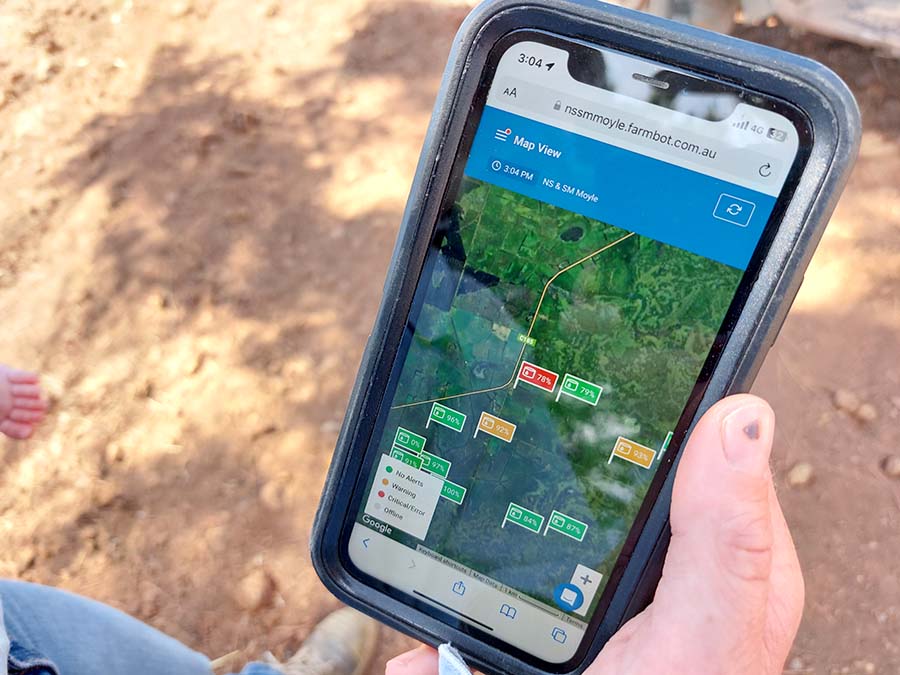 Farmbot units on water tanks at Pathfinder Angus.
Farmbot units on water tanks at Pathfinder Angus.
About five years ago, the Moyles decided to install Farmbot units on all the water tanks across their properties, to boost their water monitoring capabilities.
'The development of remote water monitoring technology was still in its early stages,' said Elle, 'but we're always interested in how we can use the latest technology to make our life easier and make our farming more efficient.'.
Each of the Moyles' Farmbot units sits on the tops of their respective tanks, and is attached to a water level sensor probe which is fed down inside the tank.
In total, the Moyles have purchased 25 of the units, which were bought and installed across their farms spanning from Padthaway, South Australia, to Gazette, Victoria.
Upon installation of each Farmbot unit, the Moyles had to input the measurements and total capacity of each tank into the associated programming technology, with the sensors then able to detect the water level in each tank within a two-centimetre accuracy.
The tanks and their respective percentiles are presented on a map view on the Farmbot website, with the percentiles colour-coded based on their status. A percentile in green means there are no alerts, orange figures represent warnings, while red figures show a critical error.
In addition to these percentiles, a graph of a tank's water level is presented, if the percentile figure is clicked on.
Text and email alerts are also sent out to all staff if a problem is detected in any of the tanks. These alerts, combined with the graphical data available in the app, allow the Moyles to easily diagnose the causes of problems.
Text and email alerts are also sent out to all staff if a problem is detected in any of the tanks. These alerts, combined with the graphical data available in the app, allow the Moyles to easily diagnose the causes of problems.
'We can clearly see if there is a sudden drop, or a slow decrease, which helps us to work out the problem pretty much straightaway,' Elle says.
'For example, if there's a sudden drop, a cow has likely broken a trough lid, but if (the drop in water level) is steady, then we're likely looking at a leak which hasn't been contained. Either way, we can go out there and fix the problem quickly, rather than being busy and not seeing it for a few days.'
'If a problem like that was to go undetected, even for a day or two, the potential detriment to the animals could be massive.'
While the option is there to add Farmbot monitors to every trough, Elle says the extra cost is not warranted at this point.
'In a feedlot situation, it would be beneficial to have a sensor in the trough, but because our cattle are run in open paddocks, the pressure on the trough system isn't as big as if we were feedlotting,' she says.
 Photo caption: 24/7 satellite or cellular connectivity for mobiles and laptops.
Photo caption: 24/7 satellite or cellular connectivity for mobiles and laptops.





